7 Best Herbal Tinctures For Dry Skin
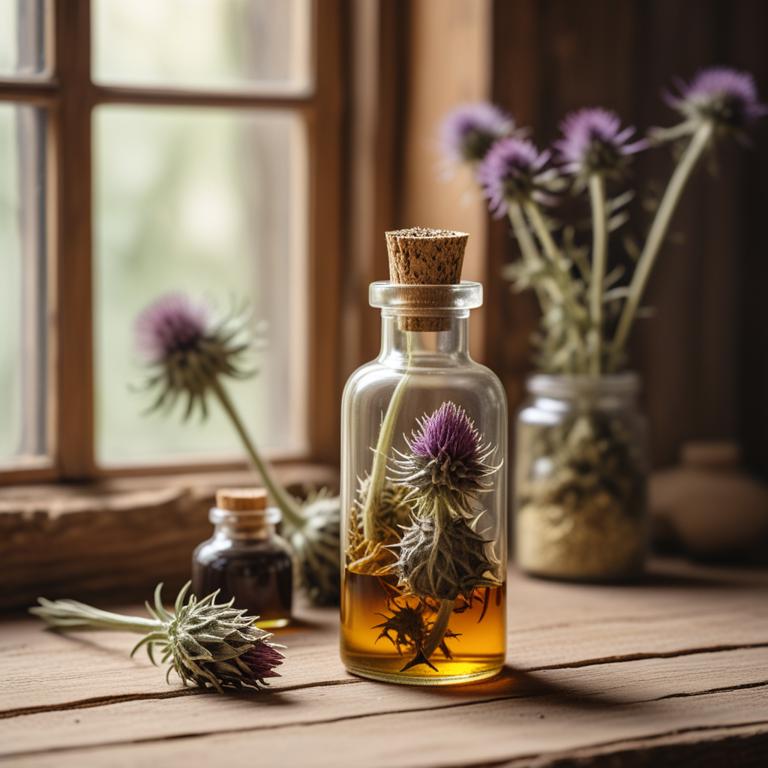
Herbal tinctures for dry skin are concentrated liquid extracts made from herbs and plants that are used to treat and alleviate dry skin conditions.
These herbal remedies offer numerous benefits, including soothing and moisturizing the skin, reducing inflammation, and promoting skin elasticity, making them an effective natural alternative to harsh chemical-based products.
Some examples of herbal tinctures used to treat dry skin include aloe vera, which has anti-inflammatory properties, chamomile, which calms and soothes irritated skin, calendula, which promotes wound healing and tissue regeneration, tea tree oil, which has antimicrobial properties, and lavender oil, which has antiseptic and moisturizing properties.
By incorporating these herbal tinctures into one's skincare routine, individuals can experience relief from dry skin and achieve healthier, more radiant skin.
According to "Forschende Komplementarmedizin und klassische Naturheilkunde = Research in complementary and natural classical medicine", tinctures, specifically ethanolic PADMA 28 tinctures, may be beneficial for dry skin as they exhibit antibacterial effects against Gram-positive bacteria, which can help alleviate skin infections and conditions associated with dry skin.
Below there's a list of the 7 best herbal tinctures for dry skin.
- 1. Aloe vera tinctures
- 2. Calendula officinalis tinctures
- 3. Chamomilla recutita tinctures
- 4. Althaea officinalis tinctures
- 5. Achillea millefolium tinctures
- 6. Glycyrrhiza glabra tinctures
- 7. Symphytum officinale tinctures
Also you may be interested in...
TODAY'S FREE BOUNDLE
Herb Drying Checklist + Herbal Tea Shopping List + Medicinal Herbs Flashcards
Enter you best email address below to receive this bundle (3 product valued $19.95) for FREE + exclusive access to The Aphotecary Letter.
$19.95 -> $0.00
1. Aloe vera tinctures
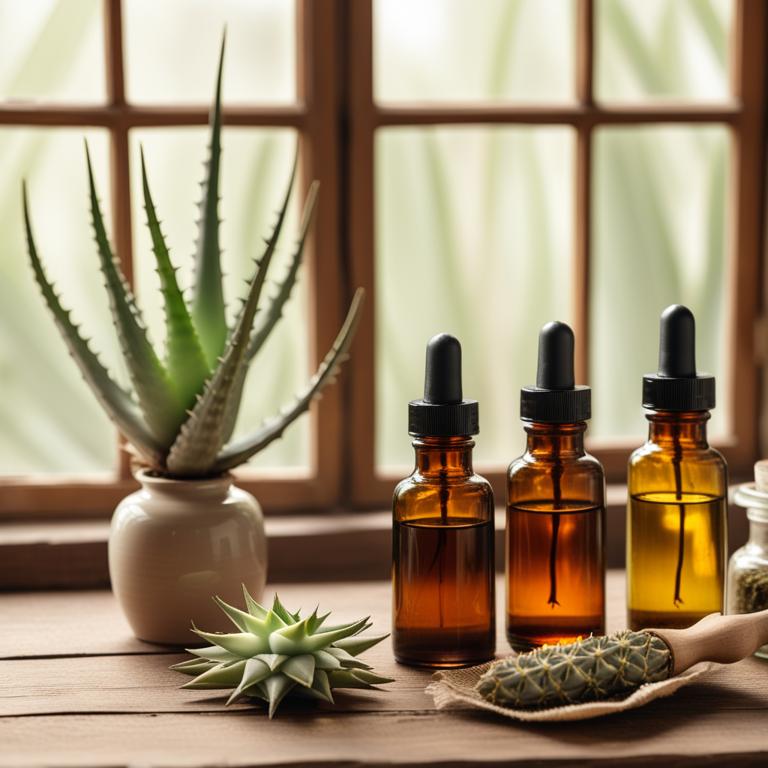
Aloe vera tinctures are a natural and effective herbal preparation used to treat dry skin ailments, such as eczema and psoriasis, due to their soothing and moisturizing properties.
The bioactive constituents, including aloin, aloe-emodin, and acemannan, help to reduce inflammation and promote skin hydration, thereby alleviating dryness and discomfort.
Aloe vera tinctures work by providing a protective barrier on the skin's surface, locking in moisture and preventing water loss, which helps to calm and soothe dry, itchy skin.
The benefits of using aloe vera tinctures include improved skin elasticity, reduced inflammation, and enhanced wound healing, making it a popular natural remedy for treating dry skin ailments.
Related Study
According to "Infectious disorders drug targets", Aloe vera tinctures for dry skin may be beneficial due to the therapeutic properties of Aloe vera as a natural herbal resource that can aid in treating skin infections and diseases, such as skin dryness, at a relatively lower cost with lesser side effects.
2. Calendula officinalis tinctures
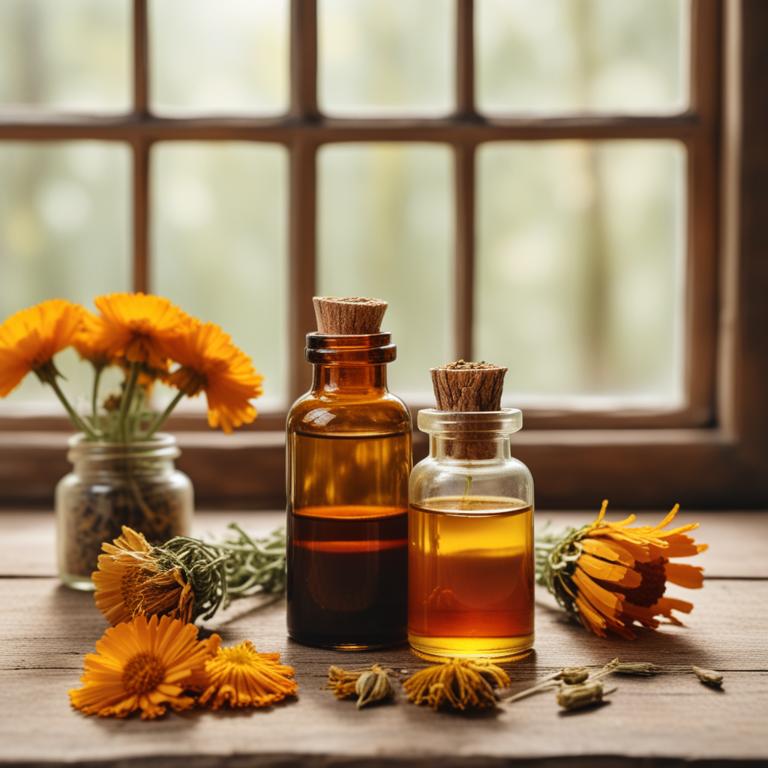
Calendula officinalis tinctures have been used for centuries to treat dry skin ailments due to their anti-inflammatory, antimicrobial, and moisturizing properties.
These herbal preparations help to treat dry skin by reducing redness and itching, promoting wound healing, and providing a protective barrier against environmental stressors.
The bioactive constituents of calendula officinalis, including triterpenoids, sesquiterpenes, and flavonoids, contribute to its therapeutic effects by inhibiting pro-inflammatory enzymes and promoting the production of collagen and hyaluronic acid.
The benefits of using calendula officinalis tinctures to treat dry skin include improved skin hydration, reduced inflammation, and enhanced wound healing, making it a popular natural remedy for skin care and wound management.
Related Study
According to "Life (Basel, Switzerland)", Calendula officinalis tinctures for dry skin can be beneficial due to the presence of natural phytomedicines that have been employed for wound treatment and infection prevention, including those caused by dry skin.
3. Chamomilla recutita tinctures
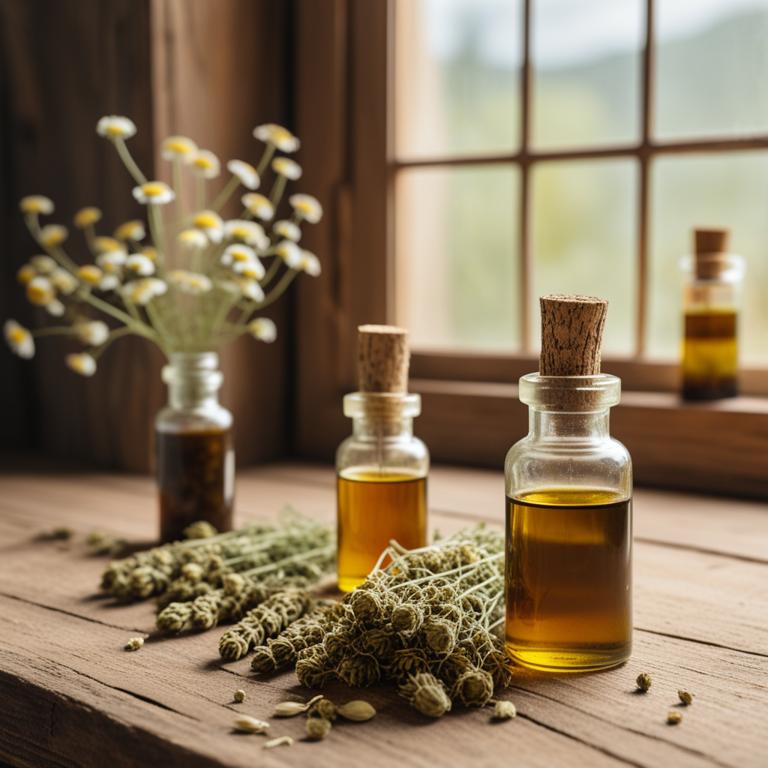
Chamomilla recutita tinctures are a popular herbal remedy used to treat dry skin ailments due to their anti-inflammatory, soothing, and moisturizing properties.
The bioactive constituents of Chamomilla recutita, including apigenin and luteolin, help to reduce inflammation and promote skin health, making it an effective treatment for dry skin conditions.
By applying Chamomilla recutita tinctures topically, individuals can experience relief from dry skin symptoms, such as itchiness and irritation, and promote the healing of damaged skin tissues.
Regular use of Chamomilla recutita tinctures can also help to lock in moisture, reducing the appearance of fine lines and wrinkles, and leaving the skin feeling smooth and hydrated.
4. Althaea officinalis tinctures
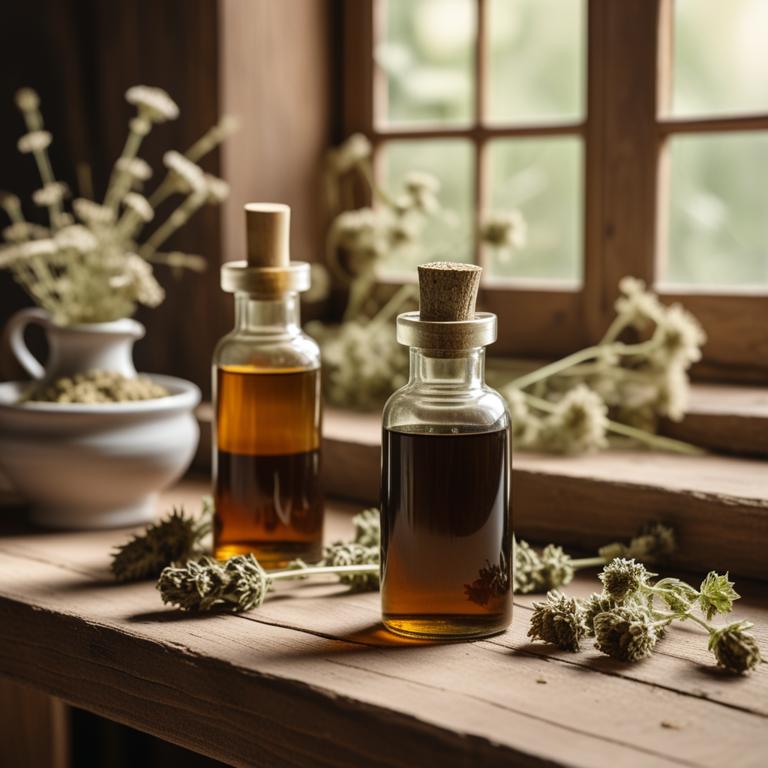
Althaea officinalis tinctures have been used traditionally to treat dry skin ailments, such as eczema and dermatitis, due to their soothing and moisturizing properties.
The mucilages present in this herbal preparation help to form a protective barrier on the skin's surface, reducing inflammation and promoting wound healing.
The bioactive constituents of Althaea officinalis tinctures, including polysaccharides and flavonoids, contribute to its anti-inflammatory and antioxidant effects, which aid in calming and soothing dry, irritated skin.
Regular use of Althaea officinalis tinctures can provide relief from dry skin symptoms, promoting a healthy and well-moisturized skin barrier.
5. Achillea millefolium tinctures
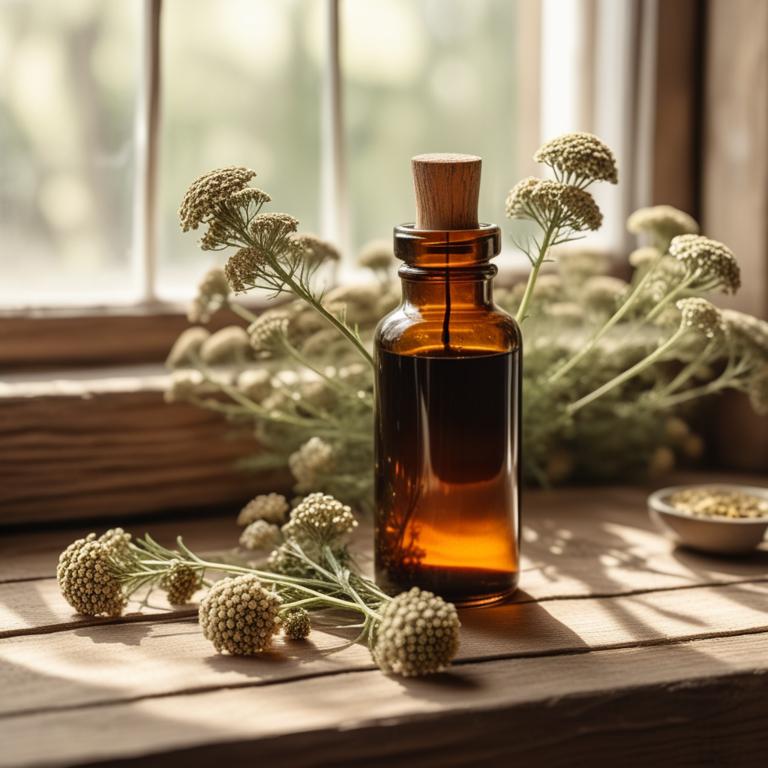
Achillea millefolium tinctures have been traditionally used to treat dry skin ailments due to their anti-inflammatory, antioxidant, and antimicrobial properties.
These properties help to soothe and calm dry, irritated skin, reducing redness and promoting a healthy skin barrier.
The bioactive constituents of Achillea millefolium, including sesquiterpenes and flavonoids, have been shown to have a positive effect on skin health, reducing inflammation and improving skin hydration.
Regular use of Achillea millefolium tinctures has been reported to provide relief from dry skin symptoms, promoting a smoother, more hydrated complexion.
Related Study
According to the study, Achillea millefolium tinctures for dry skin may be beneficial due to its anti-inflammatory properties, which promote cellular proliferation and contribute to faster tissue regeneration.
6. Glycyrrhiza glabra tinctures
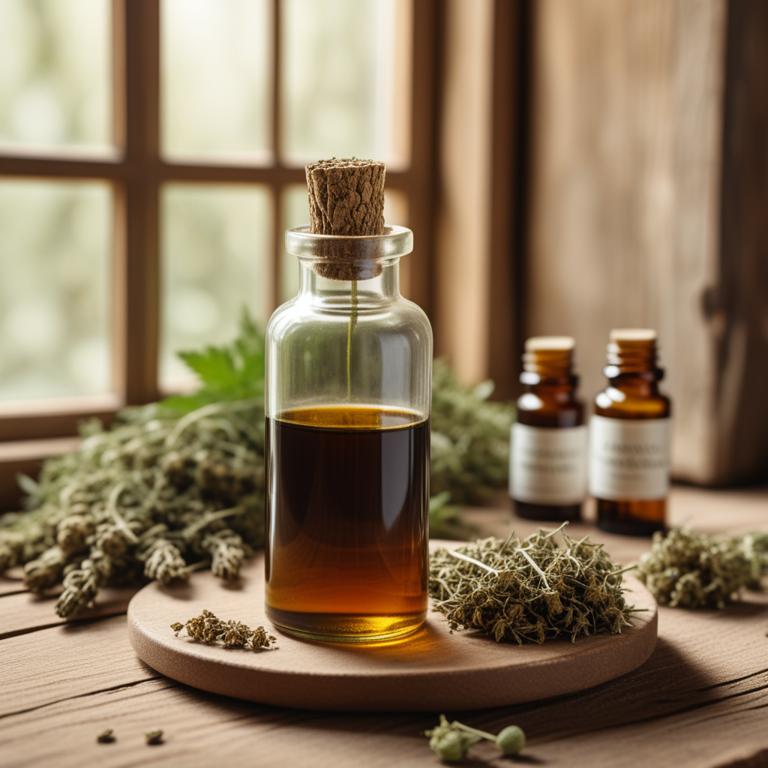
Glycyrrhiza glabra tinctures have been traditionally used to treat dry skin ailments due to their emollient and moisturizing properties, which help to soothe and hydrate the skin.
The anti-inflammatory and antioxidant properties of this herbal preparation, particularly the glycyrrhizin and flavonoids, help to reduce inflammation and protect the skin from damage, thus alleviating symptoms of dry skin.
The bioactive constituents of Glycyrrhiza glabra tinctures, including glycosides and triterpenoids, contribute to its therapeutic effects by promoting skin hydration and elasticity.
Regular use of Glycyrrhiza glabra tinctures can provide long-term benefits for dry skin, including improved skin texture, reduced itchiness, and enhanced overall skin health.
7. Symphytum officinale tinctures
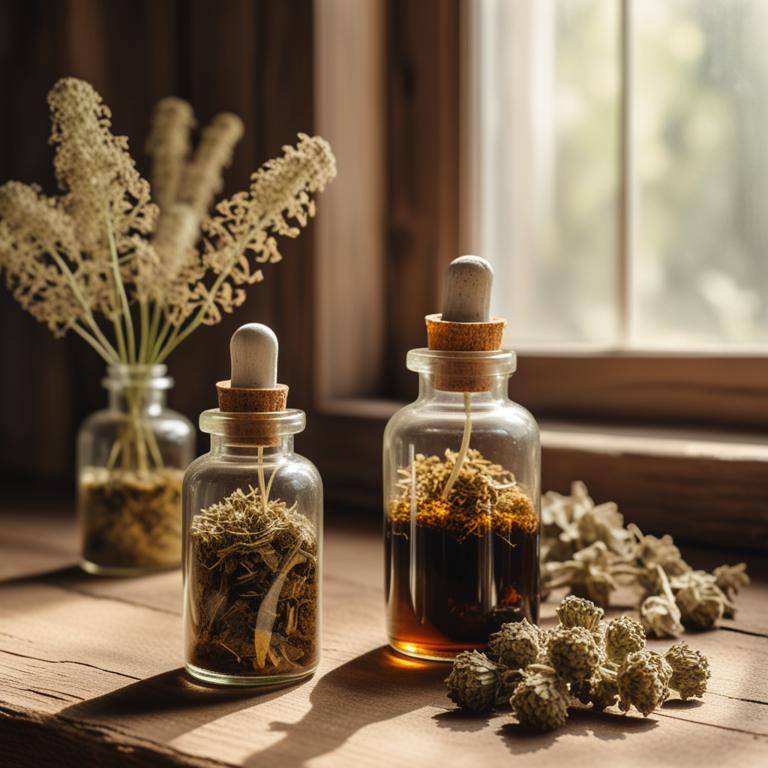
Symphytum officinale tinctures have been traditionally used to treat the dry skin ailment of eczema due to their anti-inflammatory and soothing properties.
The tannins, saponins, and flavonoids present in this herbal preparation help to reduce inflammation, calm the skin, and promote healing.
By applying Symphytum officinale tinctures topically, it helps to moisturize and protect the skin, reducing the symptoms of eczema and promoting a smoother, healthier complexion.
The benefits of using Symphytum officinale tinctures for treating eczema include reduced inflammation, improved skin hydration, and a decrease in the frequency and severity of eczema flare-ups.
Related Study
According to "Chemistry & biodiversity", Symphytum officinale tinctures for dry skin may be beneficial due to the fact that Symphytum officinale (comfrey) was found to be the most cited plant with healing actions in southern Brazil, with scientific studies demonstrating its wound-healing effects.